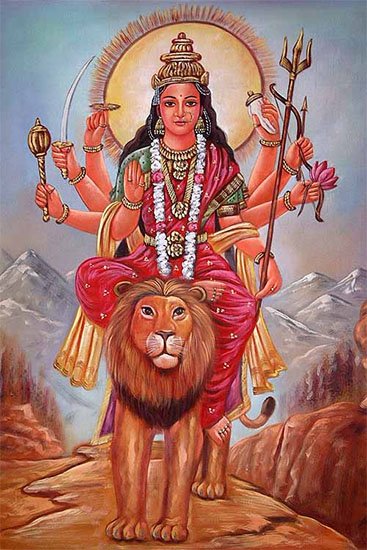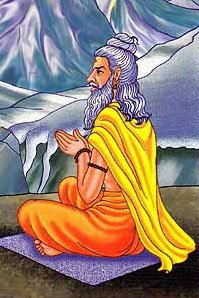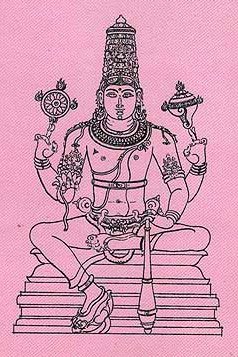Sarvavayava, Sarva-avayava, Sarvāvayava: 3 definitions
Introduction:
Sarvavayava means something in Hinduism, Sanskrit. If you want to know the exact meaning, history, etymology or English translation of this term then check out the descriptions on this page. Add your comment or reference to a book if you want to contribute to this summary article.
In Hinduism
Shaktism (Shakta philosophy)
Source: Google Books: ManthanabhairavatantramSarvāvayava (सर्वावयव) refers to “all the limbs” (of the body), according to the Manthānabhairavatantra, a vast sprawling work that belongs to a corpus of Tantric texts concerned with the worship of the goddess Kubjikā.—Accordingly, “(A true practitioner) is a hero (vīra) who exerts himself and is courageous. He is content, devoted to the teacher, not greedy, compassionate, industrious, self-controlled, of good appearance, sāttvika, deep, all his limbs are intact [i.e., sarvāvayava-saṃyuta] (and) active, he knows (true) devotion and the scriptures and crosses over into (higher) realities. He is devoted to the transmission which is free of thought (nirvikalpakrama), he eats what he has begged and is desireless. [...]”.

Shakta (शाक्त, śākta) or Shaktism (śāktism) represents a tradition of Hinduism where the Goddess (Devi) is revered and worshipped. Shakta literature includes a range of scriptures, including various Agamas and Tantras, although its roots may be traced back to the Vedas.
Purana and Itihasa (epic history)
Source: archive.org: Shiva Purana - English TranslationSarvāvayava (सर्वावयव) refers to “all the parts of the body”, according to the Śivapurāṇa 2.3.45 (“Śiva’s comely form and the Jubilation of the Citizens”).—Accordingly, as Brahmā narrated to Nārada: “Extremely surprised on hearing your words, Menā the beloved wife of the mountain, saw Śiva’s form that afforded great bliss. It was as refulgent as that of a thousand suns. Every part of the body was exquisite (sarvāvaya-vasundara). The garments were of variegated colours. He was embellished with different ornaments. He was smiling with great delight. [...]”.

The Purana (पुराण, purāṇas) refers to Sanskrit literature preserving ancient India’s vast cultural history, including historical legends, religious ceremonies, various arts and sciences. The eighteen mahapuranas total over 400,000 shlokas (metrical couplets) and date to at least several centuries BCE.
Pancaratra (worship of Nārāyaṇa)
Source: Shodhganga: Kasyapa Samhita—Text on Visha Chikitsa (p)Sarvāvayava (सर्वावयव) refers to “all the limbs”, according to the second chapter of the Kāśyapa Saṃhitā: an ancient Sanskrit text from the Pāñcarātra tradition dealing with both Tantra and Viṣacikitsā (Toxicology).—Accordingly, text text dictates that a Garuḍa-upāsaka, the aspirant, must meditate on Garuḍa of the following form—[...] He shines with his head adorned with a crown, bedecked with jewels, handsome in every limb (sarvāvayava-sundara), with tawny eyes and tremendous speed, shining like gold, long-armed, broad-shouldered and adorned with the eight divine serpents or Nāgas.

Pancaratra (पाञ्चरात्र, pāñcarātra) represents a tradition of Hinduism where Narayana is revered and worshipped. Closeley related to Vaishnavism, the Pancaratra literature includes various Agamas and tantras incorporating many Vaishnava philosophies.
See also (Relevant definitions)
Partial matches: Sharva, Avayava, Carva.
Starts with: Sarvavayavashobhita, Sarvavayavasundara.
Query error!
Full-text: Sarvavayavasundara, Sarvavayavashobhita, Avayava.
Relevant text
Search found 3 books and stories containing Sarvavayava, Sarva-avayava, Sarvāvayava; (plurals include: Sarvavayavas, avayavas, Sarvāvayavas). You can also click to the full overview containing English textual excerpts. Below are direct links for the most relevant articles:
International Ayurvedic Medical Journal
A literary review on “pancha-tikta-ghrita-ksheer basti” with special reference to the treatment of “sandhigata vata” < [2020, Issue 1, January]
Hindu Architecture in India and Abroad (by Prasanna Kumar Acharya)